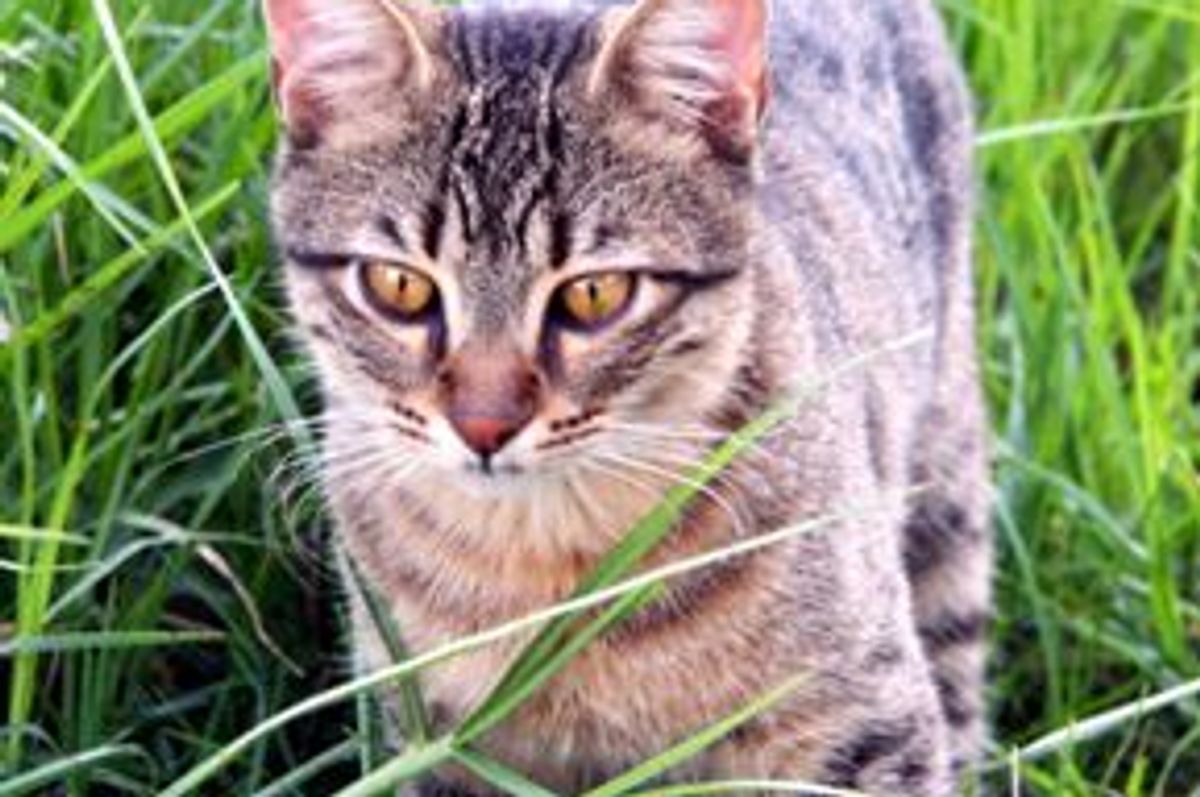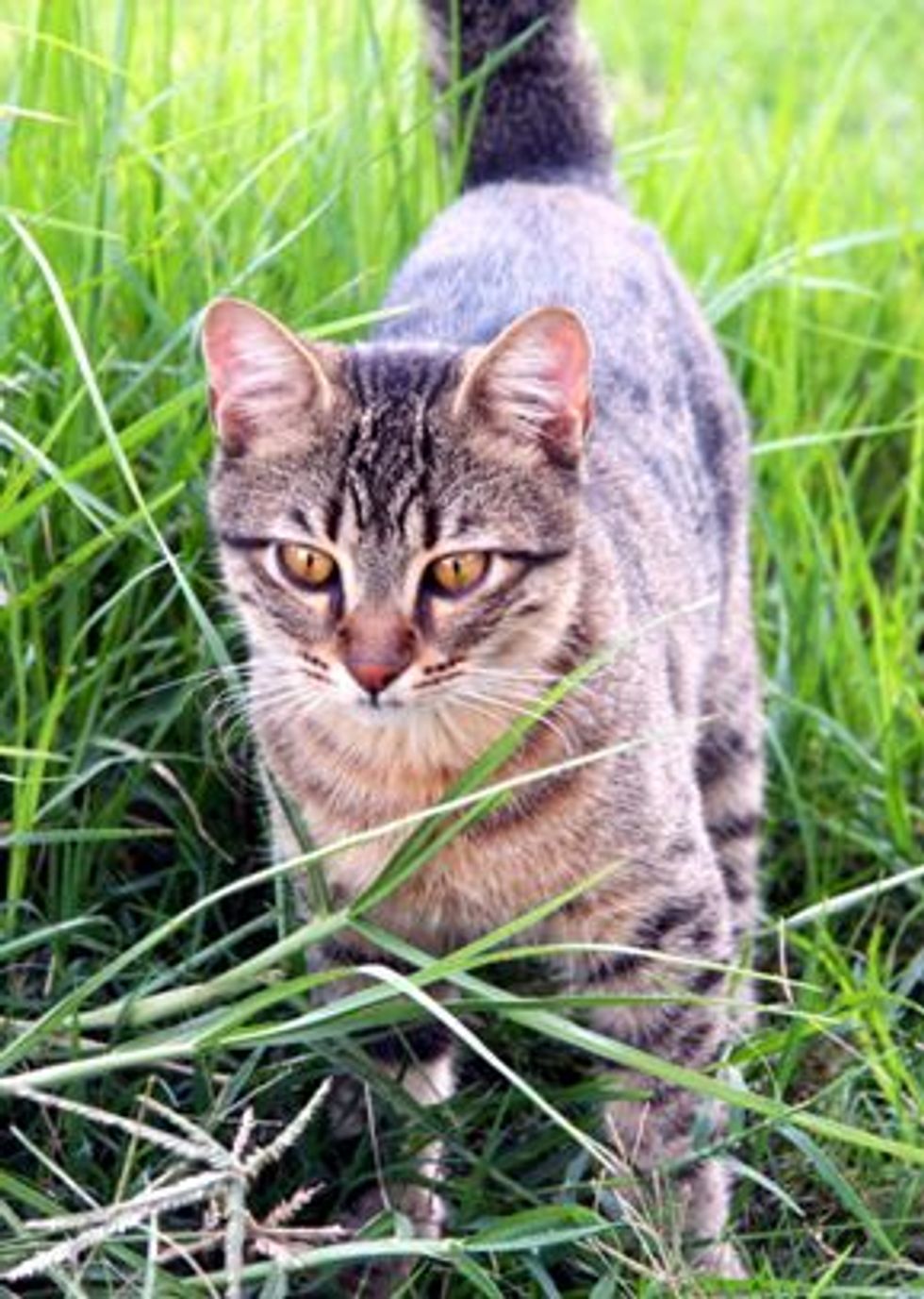If you have a multi-cat house, you probably have observed behavior displayed by your cats when they interact with one another. Posturing and showing body or vocal cues are a frequently used tactic for cats to communicate or convey their feelings or emotions to each other.
Each part of a cat's muscle or movement can be interpreted into a message of happiness, contentment, aggression or sadness. For instance, a cat walking on tiptoe with a lowered head usually indicates an offensive cat. Cat's whiskers, ears, and eyes are also excellent indicators of their feelings.
In fact, it is only accurate to construe a cat's behavior, if we consider all the elements, including their ears, eyes, whiskers, body posture, vocalization and environmental circumstances at the same time.
An offensive and aggressive cat approaching another cat, may walk on tiptoe with a lowered head, whiskers forward, ears erect and rotated sideways, claws out, pupils constricted. On the other hand, the opponent cat may start applying defensive mechanism by crouching down or fleeing the scene.
When two rival cats approach each other, it is very likely that they will give each other a good, long, slow-motion-like stare. The aggressor may walk slightly pass the subordinate, but only to turn around and pounce on the defender shortly after that. The defensive cat in turn may quickly roll over on the ground where its belly is completely exposed. This position allows the defensive cat to engage everything it's got to defend itself.
Below is a brief summary of some of the cats' behavior in offensive or defensive state. Notice that, in order to correctly translate a cat's behavior, it is important to take into account all the other elements (ears, eyes, whiskers, etc) at the same time.
Offensiveness:
- Hind legs are longer than the front and are held straight
- Walking on tiptoe with a lowered head
- Pouncing
- Hair lowered, tail stiffly moving
- Whiskers rotated foward while ears are rotated sideways or back
- Constricted pupils
- Arched back with hair standing up
- Ears rotated back and somewhat flattened
- Prolonged stare
Defensiveness:
- Crouching. This position gives an illusion that the cat appears to be smaller and less threatening to the other cat
- Turning over and exposing the belly is the ultimate defensive posture. Having the belly up gives the cat the ability to engage all its weapons such as its claws, teeth, etc. However, sometimes cats expose their belly to humans during bonding. In this case, it means relaxed or completely trusting. In some cases, you may find your cat attacking your hand while you are trying to rub its tummy. It is a natural reaction for the cat to defend itself in such position
- Arched back
- Tail shaped like an inverted "U"
- Ears rotated to the side and downward
- Ears rotated back and totally flattened
- Prolonged stare
- Round pupils (round pupils can also indicate interest, excitement or fear, depending on the circumstances)
Source:
Cat vs. Cat - by Pam Johnson-Bennett


